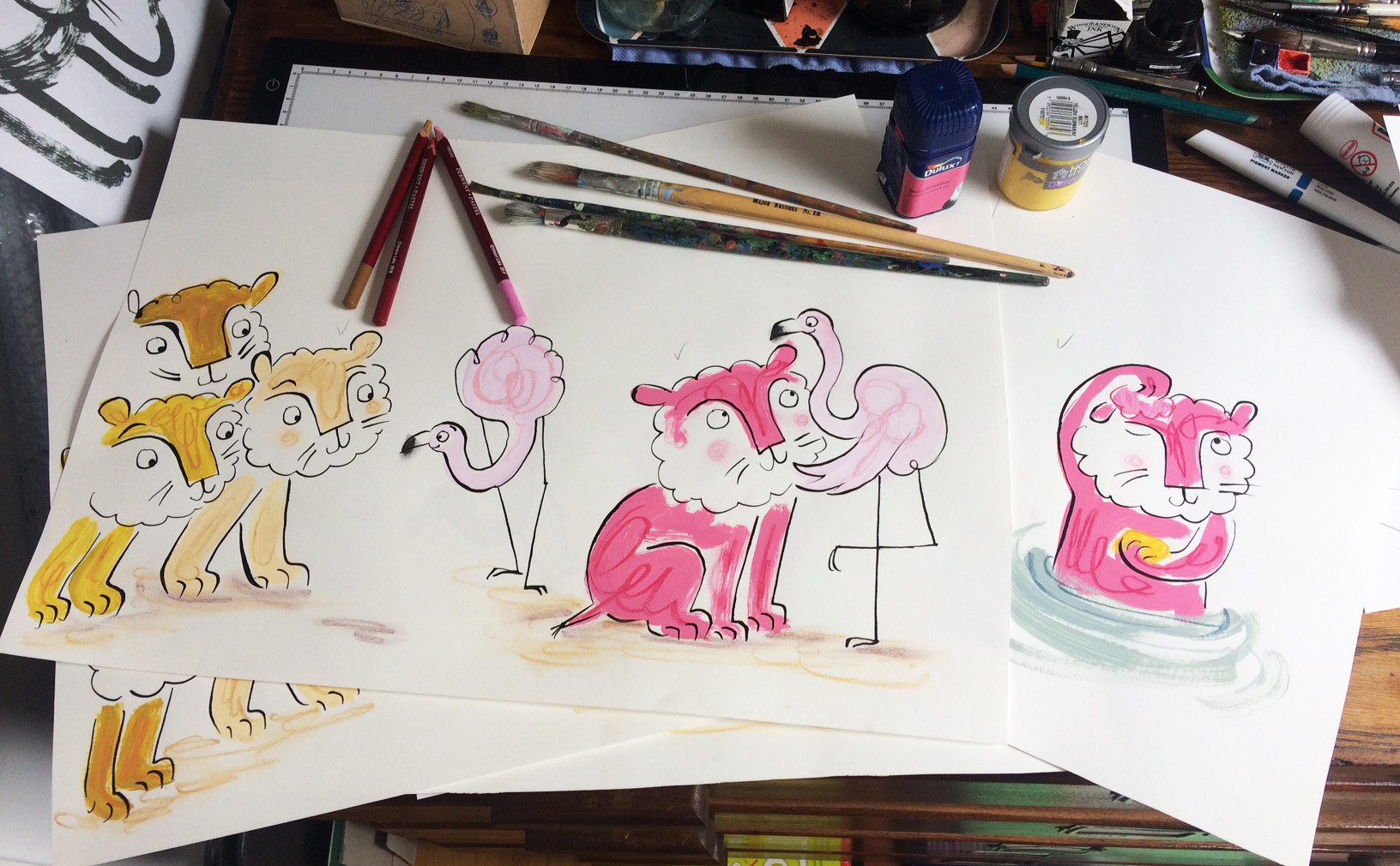 My new picture book Pink Lion is published next month by Walker Books. This is the story of how it came into being…
My new picture book Pink Lion is published next month by Walker Books. This is the story of how it came into being…
Once a week I run an art class for under 5s. It’s a great joy to watch the creativity of young minds and fingers – and a constant source of inspiration to me. This was never more true than the week we made robots. After constructing our shiny cardboard creations, I asked the group what they thought the story might be about today. “A pink lion,” said one boy, without hesitation.
That was the spark that set me pondering, scribbling and scouring museums for stone lions (the Ashmolean Museum in Oxford has a particularly fine one in pink granite). Brainstorming pink things put flamingoes in my mind, and I liked the idea that a pink lion might be adopted by pink birds and live a happy life with jelly for tea every day. For some reason it seemed natural to call him Arnold.
This didn’t offer much drama, however, which is where the growling gang of yellow lions comes in, sending Arnold into a state of confusion about his identity. The story was shaping up, and I made a series of small dummy books with all sorts of endings – in one, Arnold raced round making cold drinks for the lazy lions, in another he went home to find the flamingoes had formed a stunt motorbike troupe.

I took the latest version on a camping trip to Wales, and one wet afternoon when there wasn’t much else to do I read it out to a friend’s little boy. His feedback was concise, and pinpointed the problem with dazzling accuracy – “It needs more roaring”. And that’s when the very nasty crocodile came in, putting flamingoes in peril and letting Arnold discover his inner roar.
The story was coming together – now for the artwork. “Make it look as if it took five minutes” said my editors at Walker Books. It took about two years to make it look as if it took five minutes. I tried every material under the sun – coloured pencil, collage, gouache, ink. None of the pinks felt right, and they seemed to clash with the yellows horribly. One day I was browsing a book about Picasso, and noticed ‘household emulsion’ in the list of materials he used. That’s when it clicked – I bought a sack of tester pots from Homebase, with delightful names like Yellow Submarine and Berry Smoothie. I applied them with the worst brushes I could find, added a scribble of pastel pencil, then pen and Indian Ink for the details – and finally I had something I was happy with.
Now the book is finished, and will be out in the shops in just four weeks. I’ll be visiting bookshops to do some storytelling and signing – and it’s the first time I will have done this without an author. So that I’ve got someone to travel with, I have made myself a pink velvet soft toy version of Arnold – he’s a proper luxury lion with THREE types of pink velvet from his inner ears to his paw pads, and raspberry mohair for his scribble cheeks. I’ve stitched little bags of baking beans into his paws, which gives him just the right amount of weight to be able to sit up on his own. We are looking forward to touring together! Although our family cat is rather jealous.
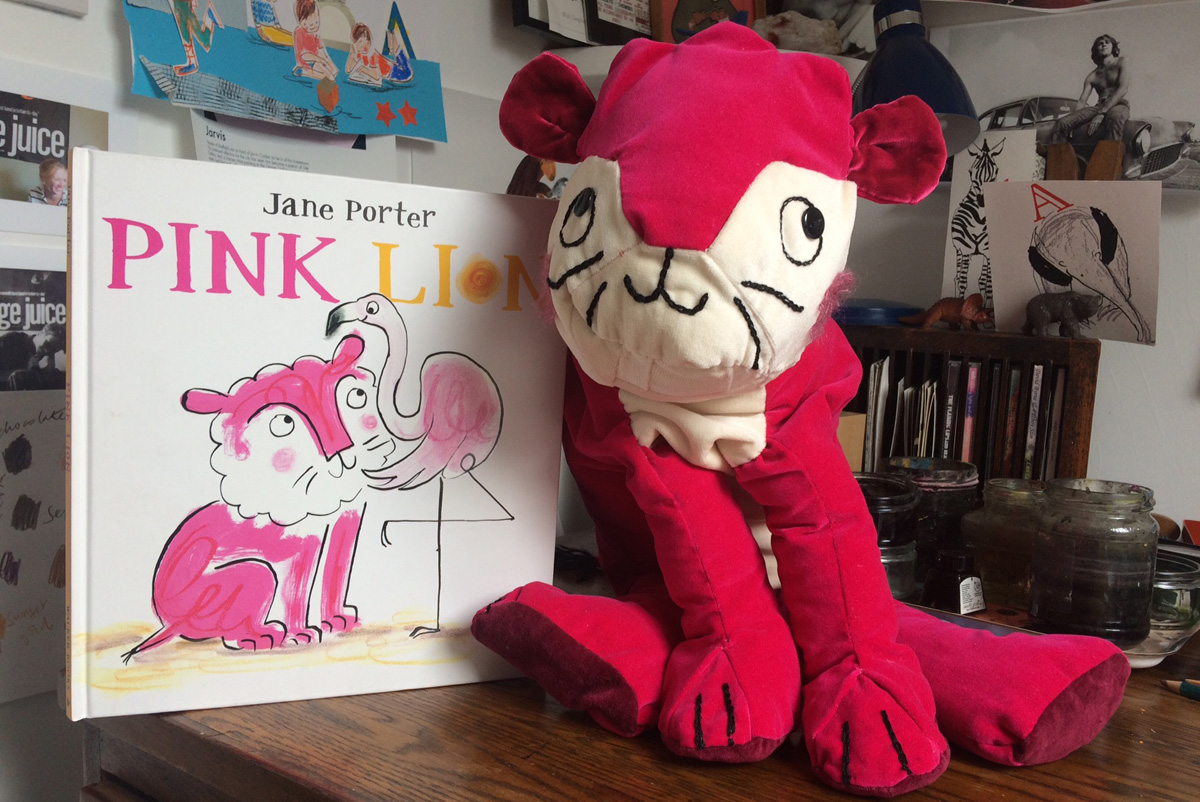


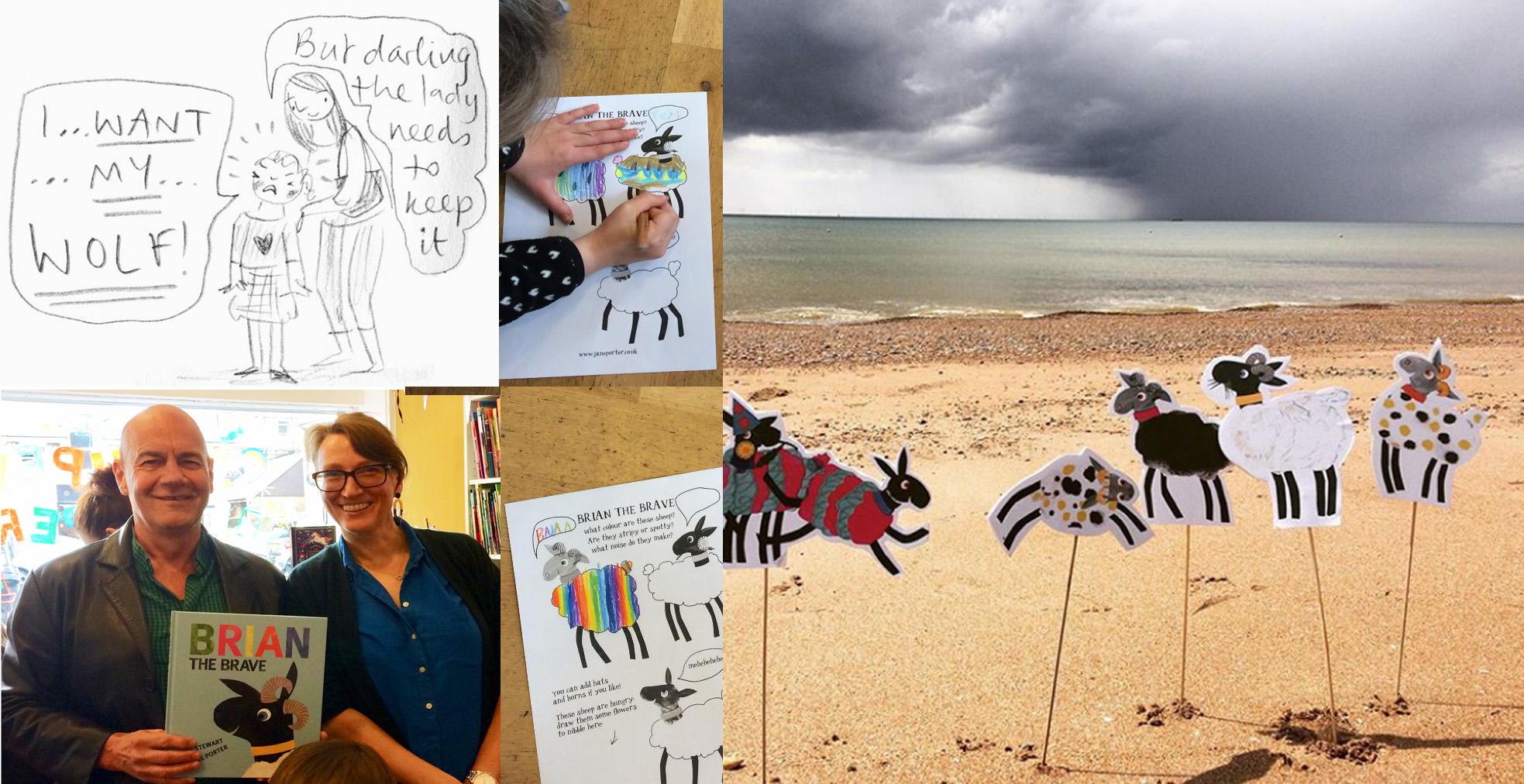
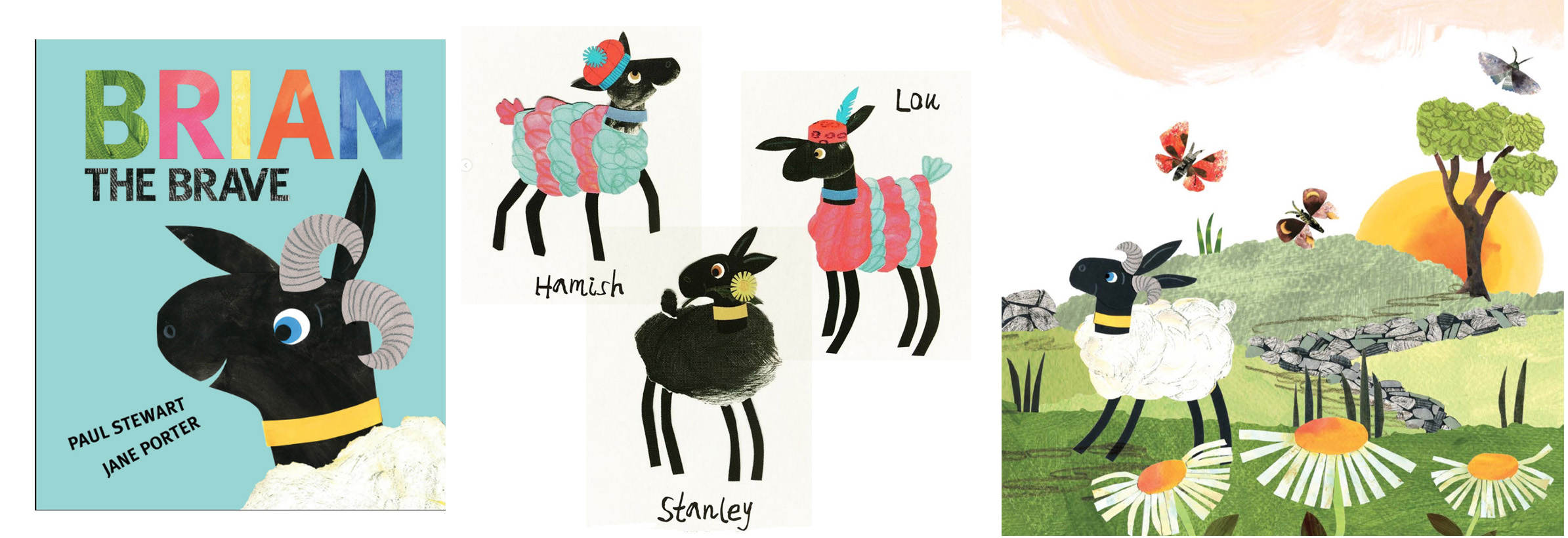


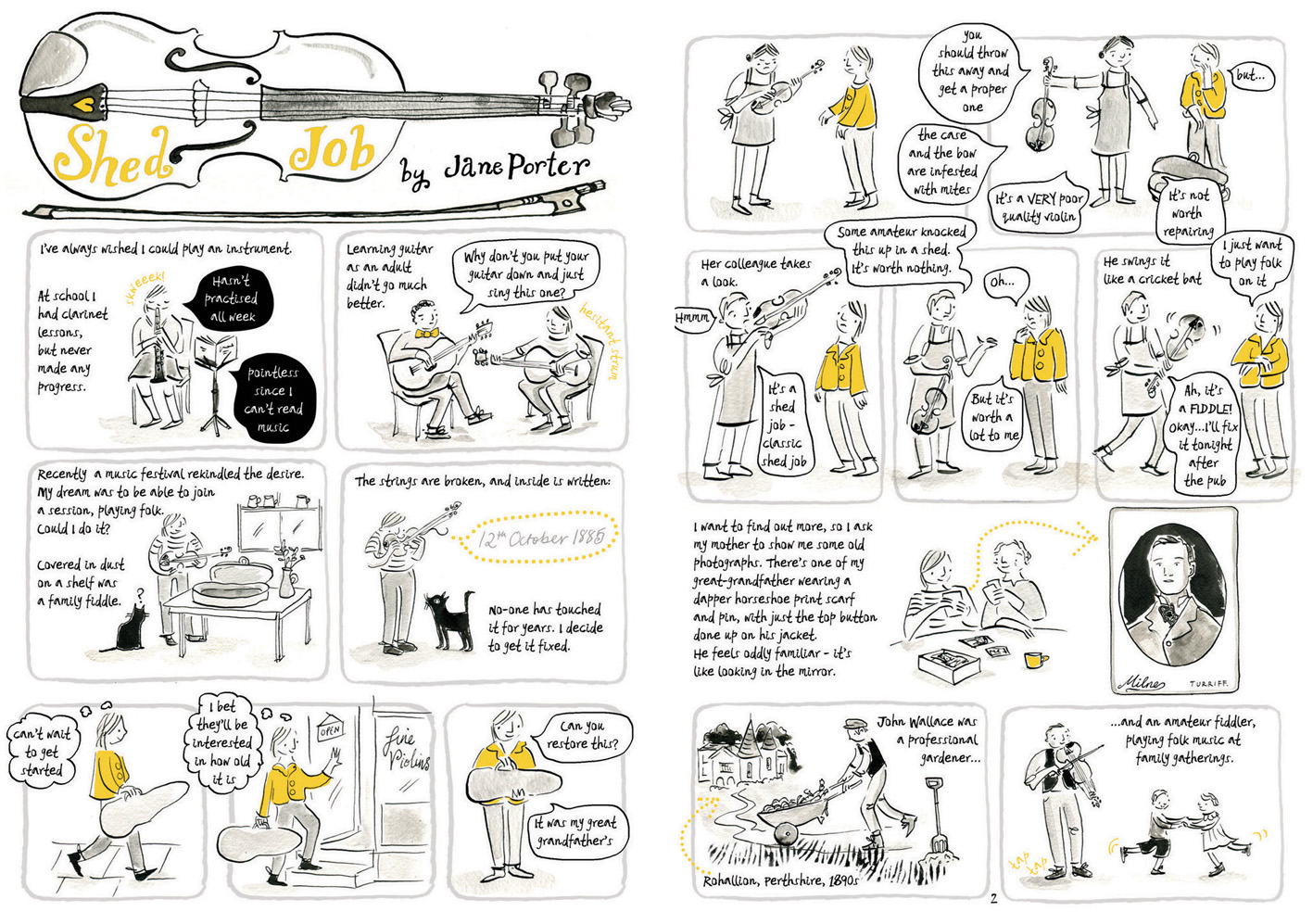
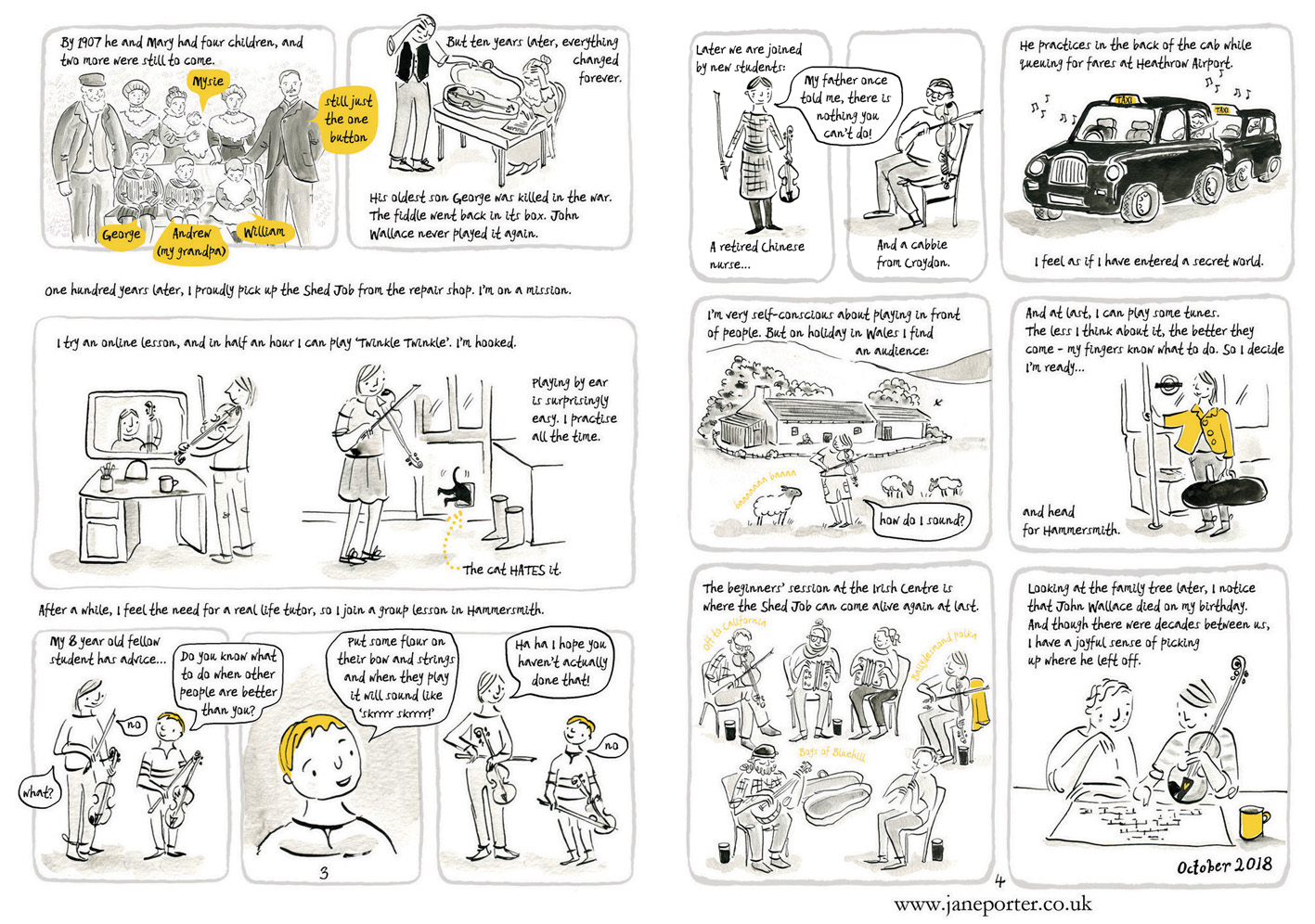



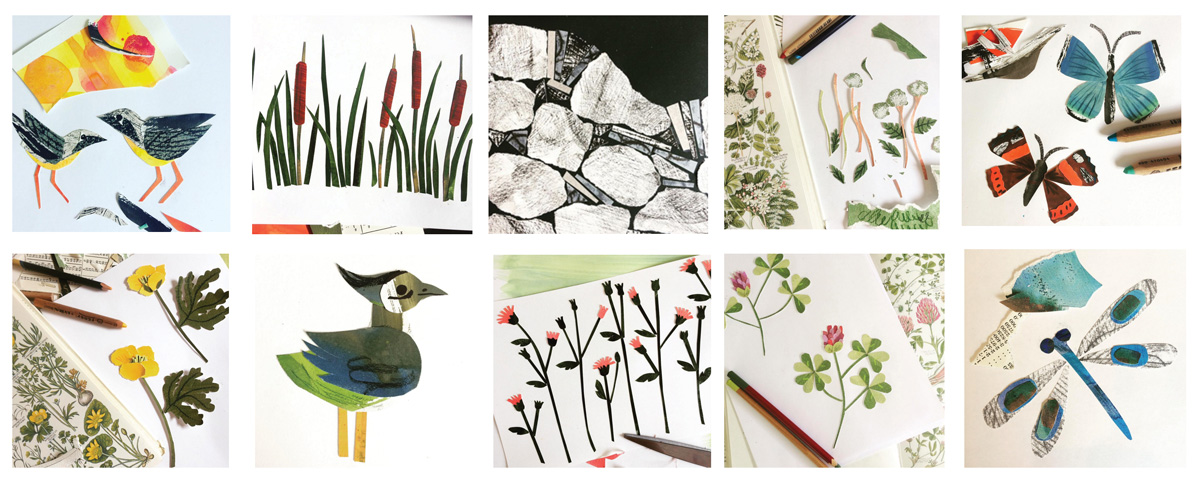

 My new picture book Pink Lion is published next month by Walker Books. This is the story of how it came into being…
My new picture book Pink Lion is published next month by Walker Books. This is the story of how it came into being…
